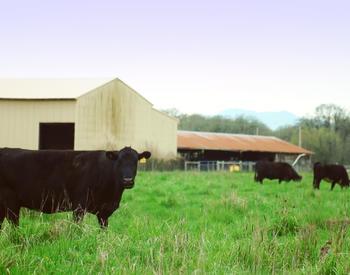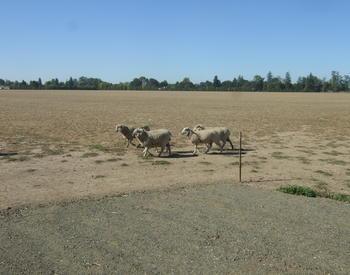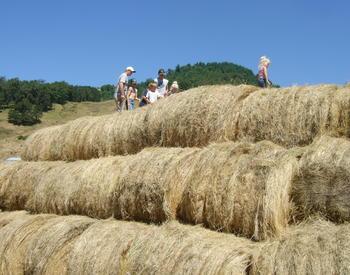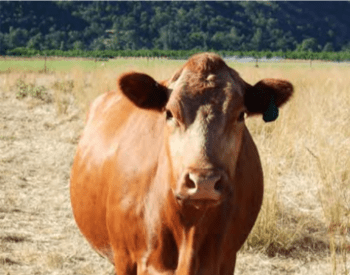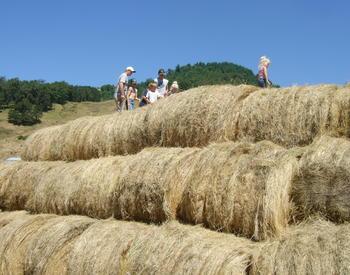Agricultural producers can gain access to the land they need through two general channels. Some own their land, after purchasing it from another landowner, bidding on it in an auction, or inheriting it from a family member. The alternative to ownership is renting land from another producer or a non-operating landowner, which is a person who owns land but is not actively involved in agricultural production.
Per the most recent data published in the 2017 Census of Agriculture, rented farmland in Oregon accounts for 30% of all farmland in the state. This is relatively low compared the national figure of 39% but still accounts for roughly 4.7 million acres of land in the state.
The comparatively low rental percentage in Oregon can be attributed to a few things:
- The large amount of grazing land – pasture and range – in the state. If it is not owned by the federal government, grazing land is generally more likely to be owned by the producer using it.
- There is also a large amount of irrigated cropland in Oregon – roughly 27% of all cropland in the state was irrigated in 2017 – which is also less commonly rented out than non-irrigated cropland due to the capital and maintenance costs associated with irrigation infrastructure.
Cash rental rates
Each year, the U.S. Department of Agriculture’s National Agricultural Statistics Service (USDA-NASS) publishes cash rental rates at the state and county levels. The county-level data come from a cash rental rate survey conducted every summer to collect information on the cash rents paid for non-irrigated cropland, irrigated cropland, and pastureland.
In 2023, 70% of the 3,700 surveyed producers in Oregon responded to the USDA-NASS cash rent survey. The state-level cash rent data come from the same June Area Survey that USDA-NASS uses as the basis for its annual farmland value estimates. A related article about farmland value in Oregon has more details.
Irrigated cropland
Over the past year, the statewide cash rent for irrigated cropland declined by 3.75% in inflation-adjusted terms. Irrigated cropland tends to be rented for much more than non-irrigated cropland due to the higher returns associated with irrigated production and the costs of maintaining irrigation-related equipment and water conveyance infrastructure (Figure 1). In 2023, irrigated cropland was rented for an average of $259 per acre, which is comparable to the previous five-year average of $260 per acre.
Looking across the state, irrigated rents tend to be highest in the northern Willamette Valley and other counties along the Columbia River: Hood River, Wasco and Morrow. With a couple of exceptions – Klamath and Malheur– counties in the eastern, central, and southern parts of the state tend to see lower irrigated cash rents.
Changes in irrigated cropland rents over the past year varied widely, with the largest percentage gains occurring in Clackamas, Baker, Union and Lake counties. Grant, Cook and Lane counties saw the largest declines (Figure 2).
Non-irrigated cropland
In contrast to irrigated cropland, non-irrigated cropland rent, at $107 per acre, was up by 2.75% over the past year. Note, however, that the 2023 rental rate is actually down compared to the most recent previous five-year average of $109.
Counties in the northern and mid-Willamette Valley tend to have the highest rents, along with Tillamook and Union counties. Southern, coastal and northeastern Oregon tend to have lower non-irrigated cash rents.
The largest annual percentage gains were in Jackson, Douglas and Wasco counties. Columbia, Clackamas and Harney counties, on the other hand, had relatively large percentage decreases (Figure 3).
Pasture
The average 2023 pasture cash rent was $11.50 per acre, a 3.01% decrease compared to the 2022 value, continuing a downward trend since USDA-NASS started their current rental rate reporting program. Although the dollar values involved tend to be lower on a per-acre basis, pasture operations tend to be much larger, so small deviations in rental rates can add up quickly.
Pasture rents have generally declined continuously since 2009, with the 2023 rent being nearly 16% lower than the previous five-year average of $13.68. The Willamette Valley, coastal and central parts of the state tend to have the highest pasture rents, while eastern Oregon, where farms tend to be larger, have lower per-acre rents. Lake, Douglas and Morrow counties had the largest percentage gains in pasture rents over the past year, contrasting with the large declines in Umatilla, Klamath and Coos counties (Figure 4).
It bears emphasizing that the USDA-NASS pasture rent figures paint an incomplete picture of the rental market for pastureland, because the USDA survey only reports on land rented for cash, but most private grazing land is rented on a per-animal unit month (AUM) or per-head basis. This blog post explores that concept further: An overview and recent snapshot of farmland rental in Oregon.
In addition, a considerable fraction of land in grazing operations comes from public land owned by the Bureau of Land Management or U.S. Forest Service, with those lands also rented on a per-AUM basis.
Summary
Cash rents can be a useful snapshot of the overall health of the farm economy, as they are heavily influenced by the net returns to agricultural production. They do, however, tend to be a lagging indicator. Rental leases for the upcoming year tend to be negotiated following harvest in the late fall, winter or early spring, so the values reported by NASS for 2023 are more reflective of what landowners and renters expected the year to bring, not what actually happened.
In addition, some leases, particularly for irrigated farmland, tend to be renewed on a multi-year basis. Thus, for example, a three-year fixed-cash lease covering the 2021-2023 production years could also be included in the 2023 NASS values, which makes it further removed from current production conditions.
Because purchasing land outright typically requires extensive financial capital, for example, money for a down payment and other land currently owned as collateral, renting is often seen as a way for new and beginning producers, or producers who are otherwise financially disadvantaged, to build and grow an operation.
Land rental, however, is not limited to smaller producers, as most commercial farms in the U.S. contain a mix of owned and rented land. As is the case with land values, changes in rental rates produce winners and losers. As commodity prices rise, landlords tend to raise rents and gain a higher nominal return on their land investment, which offsets the benefit of higher prices for their tenants.

